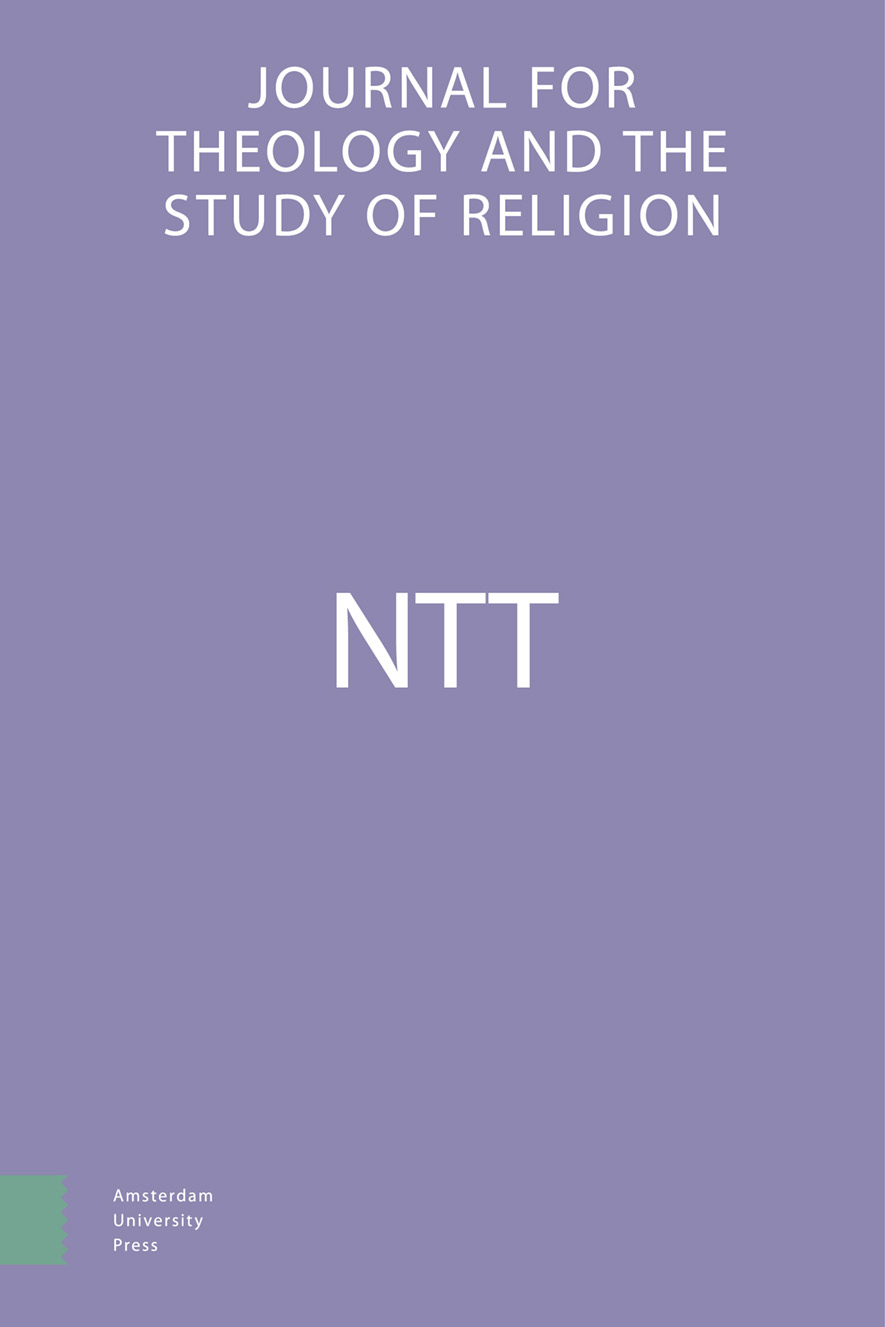- Home
- A-Z Publications
- NTT Journal for Theology and the Study of Religion
- Previous Issues
- Volume 41, Issue 4, 1987
NTT Journal for Theology and the Study of Religion - Volume 41, Issue 4, 1987
Volume 41, Issue 4, 1987
-
-
De functie van Jeremia 50 en 51 binnen het boek Jeremia
More Less*Over het onderwerp van dit artikel heb ik in het seizoen 1985/6 een werkcollege gegeven aan een groep Utrechtse studenten; voor hun bijdragen ben ik erkentelijk. In het bijzonder noem ik Jils G. Amesz, die zich diepgaand met Jeremia 50 cn 51 heeft beziggehouden en wiens steun bij het schrijven van dit artikel ik op hoge prijs heb gesteld.
AbstractStudies on Jer. 50/1 are dominated by the search for a Jeremianic core. The results of these inquiries are, however, disappointing. Instead of making a new attempt the author of this article tries to introduce another point of investigation: for what reason decided the writers of the book of Jeremiah to compose and include the chapters 50 and 51 into their work? By studying the structure of the prophecy and the links with Jer. 25 and 27-29 it became apparent that Jr. 50/1 are not a later addition. On the contrary, this prophecy against Babylon has been included by the writers in order to compensate for the pro-Babylonian attitude attributed to Jeremiah in the chapters 27-29, 39-40. The writers wanted to counteract the impression that Jeremiah was a friend of Babylonia and, consequently, a traitor.
-
-
-
‘Sociale meditaties’
More Lessin het Boeddhisme1Zie H. Conze, Buddhist Thought in India, London 1962, pp. 80 e.v. Voor ccn analyse op basis van Buddhaghosa’s Visuddhimagga, zie Paravahera Vajirañāṇa Mahāthera, Buddhist Meditation, Kuala Lumpur 21975, pp. 263 e.v.
AbstractThis article gives a description of the basic Buddhist meditation on mindfulness (sati) and of the so-called ‘immeasurable’ meditations of love, compassion, sympathetic joy and equanimity, mainly in the Theravāda tradition, including the contemporary versions.
-
-
-
Het kruis en de regenboog; Christus in een multi-religieuze cultuur
More Less*Kanttekening van J. A. B. Jongeneel: Ter gelegenheid van het 350-jarig bestaan der Rijksuniversiteit te Utrecht is aan dr. Stanley J. Samartha op 11 juni 1986 een eredoctoraat in de godgeleerdheid verleend. Op de dag aan die plechtigheid voorafgaande heeft deze Indiase theoloog van de dialoog in de Janskcrk te Utrecht een gast-college gegeven, getiteld ‘The cross and the rainbow; Christ in a multi-religious culture’, waarvan hier de door H. Engelvaart en M. B. Jongeneel-Touw verzorgde vertaling verschijnt, die wat de Sanskriet-termen betreft gecontroleerd is door M. A. G. T. Kloppenborg. Bij die gelegenheid is hem aangeboden J. A. B. Jongeneel (red.), Ganges en Galilea; een keuze uit het werk van Stanley J. Samartha, Kampen 1986, dat opent met een levensschets van de eredoctor.
AbstractThe degree of Doctor in the Faculty of Theology (honoris causa) of Utrecht University was conferred upon Stanley J. Samartha in 1986. This article is the Dutch translation of a lecture on ‘The cross and the rainbow, Christ in a multi-religious culture’, given at that time to both staff and students of the Utrecht Faculty of Theology.
In this contribution Samartha deals with the place of Christ in a multi-religious society. His main thesis is: it is not the dogmas and doctrines about Christ that have touched the heart and mind of neighbours of other faiths in India, but the life and teaching of Jesus of Nazareth, his death and resurrection, the illumination he has brought into the mystery of God and the transforming power he has introduced into human life, moving from self-centredness to God-centredness. He is jivan-muktā, one who is truly liberated in life, and therefore, able to liberate others.
(abstractor: prof dr. J. A. B. Jongeneel)
-
Volumes & issues
-
Volume 78 (2024)
-
Volume 77 (2023)
-
Volume 76 (2022)
-
Volume 75 (2021)
-
Volume 74 (2020)
-
Volume 73 (2019)
-
Volume 72 (2018)
-
Volume 71 (2017)
-
Volume 70 (2016)
-
Volume 69 (2015)
-
Volume 68 (2014)
-
Volume 67 (2013)
-
Volume 66 (2012)
-
Volume 65 (2011)
-
Volume 64 (2010)
-
Volume 63 (2009)
-
Volume 62 (2008)
-
Volume 61 (2007)
-
Volume 60 (2006)
-
Volume 59 (2005)
-
Volume 58 (2004)
-
Volume 57 (2003)
-
Volume 56 (2002)
-
Volume 55 (2001)
-
Volume 54 (2000)
-
Volume 53 (1999)
-
Volume 52 (1998)
-
Volume 51 (1997)
-
Volume 50 (1996)
-
Volume 49 (1995)
-
Volume 48 (1994)
-
Volume 47 (1993)
-
Volume 46 (1992)
-
Volume 45 (1991)
-
Volume 44 (1990)
-
Volume 43 (1989)
-
Volume 42 (1988)
-
Volume 41 (1987)
-
Volume 40 (1986)
-
Volume 39 (1985)
-
Volume 38 (1984)
-
Volume 37 (1983)
-
Volume 36 (1982)
-
Volume 35 (1981)
-
Volume 34 (1980)
Most Read This Month


